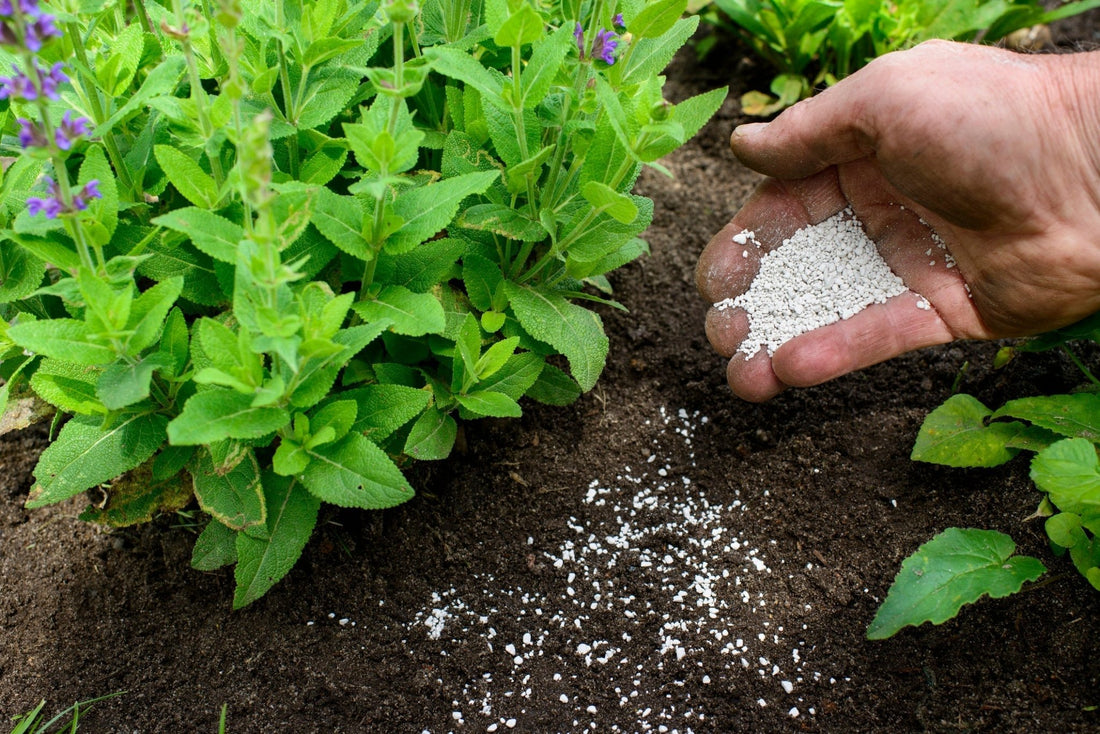The Ultimate Guide to Fertilizing Shrubs
Ah, shrubs—those unsung heroes of the landscape. They add structure, provide privacy, and keep your yard looking lush. But like all living things, they need food! And no, tossing last night's spaghetti leftovers at their roots won’t cut it. Fertilizing shrubs properly in Canadian Growing Zone 5 (hello, Georgina, Ontario!) is key to keeping them healthy, vibrant, and ready to face the wild rollercoaster of seasons.
Should You Even Fertilize?
Not every shrub needs a fertilizer intervention. If your shrubs are growing well, producing healthy leaves, and not looking like they’ve just survived a horror movie, you might not need to fertilize at all. Over-fertilizing can lead to excessive leaf growth at the expense of flowers or can even stress the plant.

Step One: Do a Soil Test
Before you start flinging fertilizer around like a gardening wizard, do a soil test. This will tell you what nutrients your soil has (or lacks) and whether your shrubs actually need a boost. Soil tests can be done with a home kit or by sending a sample to a local extension service.
When to Fertilize Shrubs
Timing is everything. Here’s when to feed your shrubs:
-
Early Spring (just as buds start swelling) – This helps wake them up and gives them the nutrients they need to grow strong for the season.
- Wait until the risk of frost has passed! Fertilizing too early can push out tender new growth that will get zapped by a late frost.
- Mid-Summer (if needed) – If growth seems slow or leaves are yellowing, a mid-season boost can help.
-
Early Fall (light application) – Helps root growth before winter, but don’t overdo it—you don’t want to encourage new growth that won’t survive the frost.
- Avoid fertilizing in late fall, as shrubs should be going dormant, not trying to push out new, vulnerable growth.
- Freshly Planted Shrubs – Use a transplanter/root simulator fertilizer (like one high in phosphorus, such as 5-15-5) to help establish strong roots instead of pushing leafy growth too soon.

Types of Fertilizer for Shrubs
Organic vs. Synthetic
- Organic fertilizers (compost, manure, bone meal, fish emulsion) release nutrients slowly, improve soil health, and feed beneficial microbes.
- Synthetic fertilizers (granular, liquid, or slow-release pellets) provide nutrients more quickly and in precise ratios but won’t improve soil structure.
Slow-Release vs. Quick-Release Fertilizers
- Slow-release fertilizers (coated granules, organic matter) break down over time, providing consistent nutrients without the risk of burning plants.
- Quick-release fertilizers (water-soluble powders, liquids) act fast but can wash away with heavy rain, requiring more frequent applications.
Understanding Nutrients: What Shrubs Need
Primary Nutrients (The Big Three: N-P-K)
When you pick up a bag of fertilizer, you’ll see three numbers—this is the N-P-K ratio, always in this order:
- N (Nitrogen) – Encourages leafy, green growth.
- P (Phosphorus) – Supports root and flower development.
- K (Potassium) – Enhances overall plant health and resistance to stress.
What do the numbers mean?
They represent the percentage of each nutrient in the total mix. For example:
- 10-10-10 = 10% nitrogen, 10% phosphorus, 10% potassium = 30% total nutrients, 70% filler
- 0-0-60 = 0% nitrogen, 0% phosphorus, 60% potassium = 60% total nutrients, 40% filler
Why would there be a zero? Because different plants have different needs. A high-phosphorus fertilizer (like 0-20-20) is great for root growth but won’t push unnecessary leafy growth.

Micronutrients (The Underdogs That Matter)
These include iron, magnesium, zinc, and manganese—small but mighty nutrients that help with photosynthesis, disease resistance, and overall plant health. Most soil naturally contains these, but a soil test will tell you if your shrubs need extra.
What Fertilizer Ratio to Use for Shrubs
A balanced 10-10-10 fertilizer is a great all-purpose option, but depending on your shrub type, you might need something different:
- Flowering shrubs (like lilacs, hydrangeas): Use a fertilizer higher in phosphorus, such as 5-10-5, to encourage blooms.
- Evergreens and leafy shrubs (like boxwood, yews): A fertilizer with more nitrogen, such as 12-6-6, will keep them lush and green.
Specialty Fertilizers for Shrubs
Not all shrubs are created equal. Some have unique dietary needs, just like some people thrive on kale smoothies while others survive on coffee and sarcasm.
Fertilizers for Fruit-Bearing Shrubs
Shrubs like blueberries, raspberries, and currants need extra phosphorus and potassium for fruit production. Look for:
- 5-10-10 or 4-12-4 (helps with flowering and fruit set)
Fertilizers for Acid-Loving Shrubs
Plants like hydrangeas, rhododendrons, and blueberries prefer acidic soil. Special acid-loving plant fertilizers help maintain the right pH. Look for:
- 30-10-10 (for acid-loving evergreens)
- Organic options like sulphur or cottonseed meal to naturally lower pH
Fertilizers for Alkaline-Loving Shrubs
Some shrubs (like lilacs and mock orange) prefer neutral to slightly alkaline soil. If your soil is too acidic, use:
- Lime-based fertilizers
- Wood ash to raise pH naturally
Organic Fertilizer Options
If you want to go natural, these fertilizers are great for shrubs:
- Compost – Boosts soil health and adds slow-release nutrients
- Fish emulsion – Quick nitrogen boost (great for leafy shrubs)
- Bone meal – High in phosphorus for root growth
- Kelp meal – Adds trace minerals and improves stress tolerance

How to Apply Fertilizer
- Read the label – Seriously. Fertilizers aren’t one-size-fits-all, and overdoing it can harm your plants.
- Apply around the drip line – The drip line is where water naturally falls from the outermost branches. Spread fertilizer in this area rather than right at the base of the trunk.
- Scratch it in lightly – Use a rake or cultivator to work granular fertilizer slightly into the top inch of soil.
- Water thoroughly – This helps nutrients move into the soil and reach the roots.
- Repeat only as needed – Don’t get fertilizer-happy. Over-fertilizing can cause more harm than good.
So there you have it, fertilizing shrubs in Georgina's growing zone 5 isn’t complicated, but doing it right can make a world of difference. Test your soil, choose the right fertilizer, apply at the right time, and watch your shrubs thrive! Now go forth and feed your plants—responsibly.
Happy gardening!




